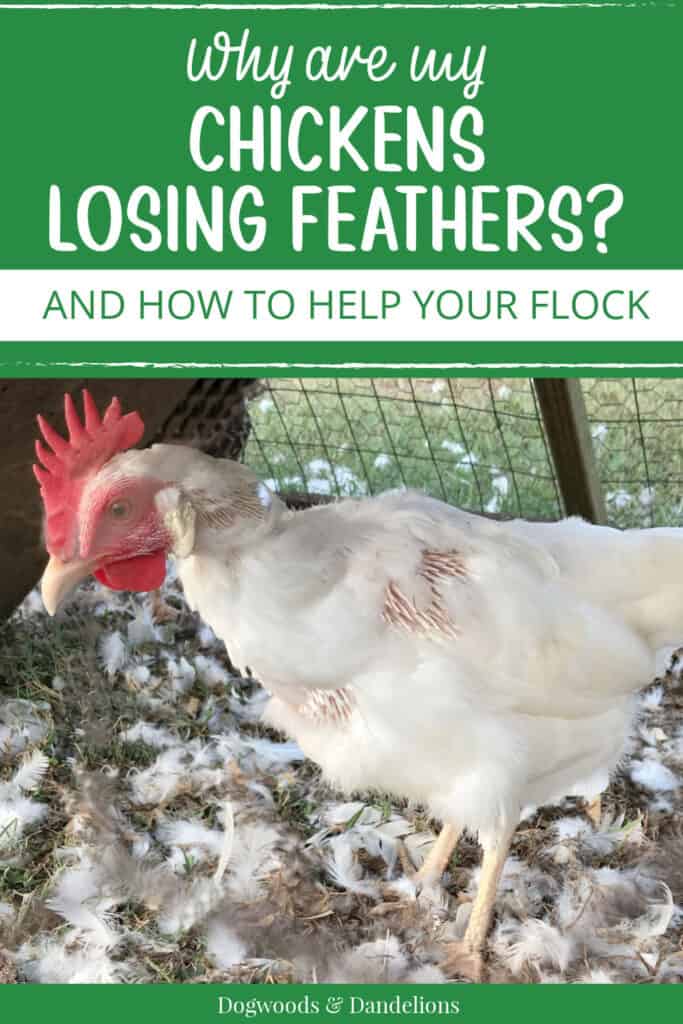Why Are My Chickens Losing Feathers?
Inside: There can be many reasons why your chickens are losing feathers. Let’s explore a few of these reasons so you can decide if there is anything you should be worried about.
Are Your Chickens Molting?
The most common reason chickens lose feathers is their yearly molt. Each year, in late summer or early fall, a chicken loses its feathers and grows new ones.
Molting is a natural process and the timing is not a coincidence. It prepares them for the chillier months ahead with a fresh, full coat of insulating plumage.
But the process of molting takes a lot of energy for the chicken so it often means the hens slow down egg laying or stop altogether. Some chickens will molt quickly and look almost naked for a week or so. You may even see some bare skin. Others molt so slowly that you may only notice a few feathers missing at a time.
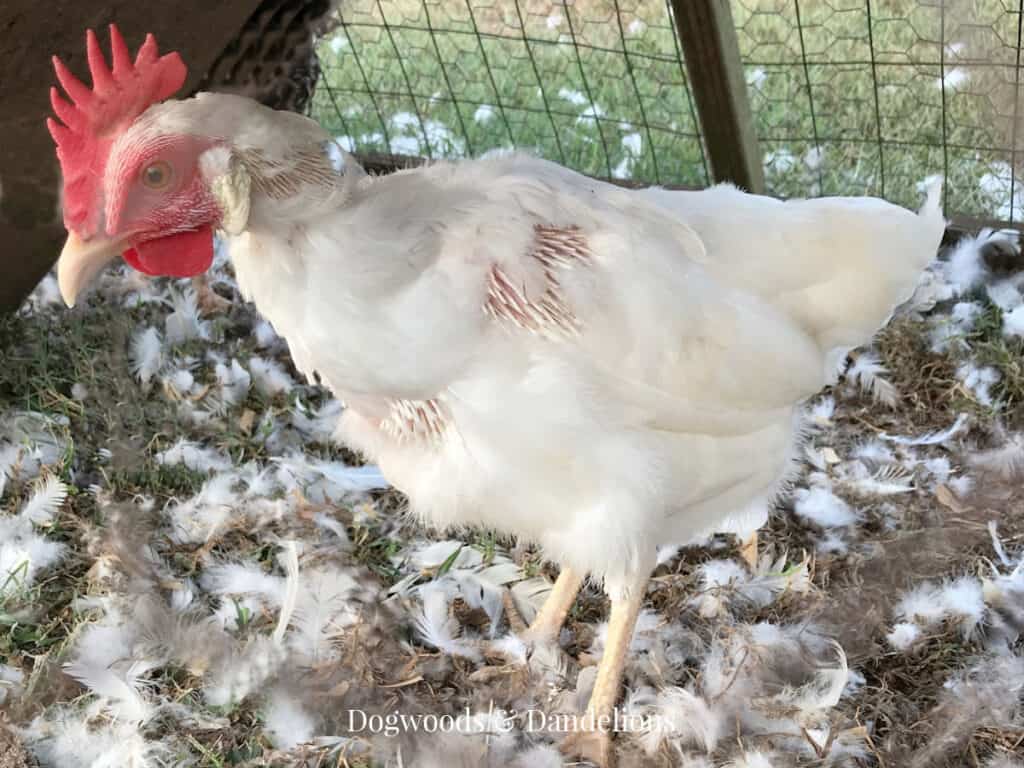
Affiliate Disclosure: Please note that some of the links in this article may be affiliate links and I may receive a small commission if you purchase something through a link. It will not change your cost. As an Amazon Associate, I earn from qualifying purchases. For more information, see my disclosures page.)
Oftentimes, this coincides with shorter daylight hours too. This is usually the main reason your chickens are losing feathers and not laying eggs.
However, your best egg layers will tend to molt quickly and get back to laying eggs. If you need to cull chickens, the speed at which they molt can be one way of determining who needs to go. (Slower molting chickens tend to lay fewer eggs.)
Understanding the Molting Process
All chickens molt by losing feathers in a certain order. It isn’t just a random feather here and there.
The molting begins from the head and proceeds down the neck, onto the body, and finishes with the tail feathers. As they grow new feathers, the birds may seem less active and more sensitive as these pinfeathers develop.
They often take on a scruffy appearance, which might worry first-time chicken owners, but with a bit of patience, they will emerge with a beautiful new set of feathers.
(The first time I went up to my chicken coop and found feathers everywhere, I just knew something had somehow managed to get in my coop. Thankfully, it was just a very fast molting chicken that had shed lots of feathers almost overnight!)
You may also notice that your chicken’s combs and wattles will be paler. Molting takes a lot of energy so your hens may also not be as active.
You can help your flock through their annual molt by providing extra protein. I’ll go into more detail about this later in the post.

Read More: How to Help Your Molting Chickens
Baby chicks often go through a molt about 6-8 days old and again between 8-12 weeks of age too. Both of these molts are completely normal and don’t require any special treatment.
The Impact of Molting on Egg Production
Watching your favorite hen go through the molting process, you might notice more than just a few feathers strewn across the coop floor. It’s not just the feathers they’re shedding – egg production can take a nosedive too.
This pause in laying is their body’s way of redirecting energy. Resources that are normally used for egg creation are taken so that your flock can grow new feathers. The protein usually used for egg-making goes straight to feather production.
Molting can halt egg production for several weeks, often between 1 to 3 months. Many chickens take a break from laying until their new coat of feathers is complete.
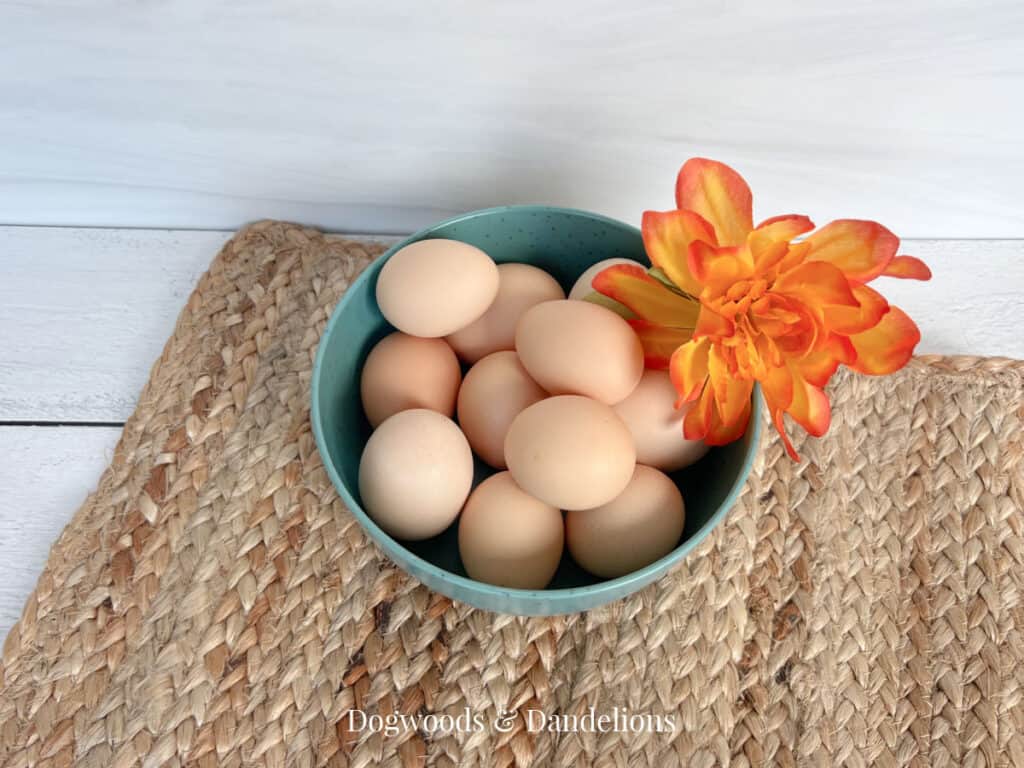
What many people don’t realize is that eggs are actually a seasonal product, just like homegrown tomatoes. That’s why deviled eggs are so popular in the spring around Easter. Chicken egg production is in full swing then.
Feeding for Feather Regrowth
Shedding old feathers and regrowing new ones is quite a demanding period for your backyard chickens. A diet rich in protein is one of the most important things to help your flock during the fall molt.
There are many types of chicken feed on the market that have a higher protein content than standard laying pellets.
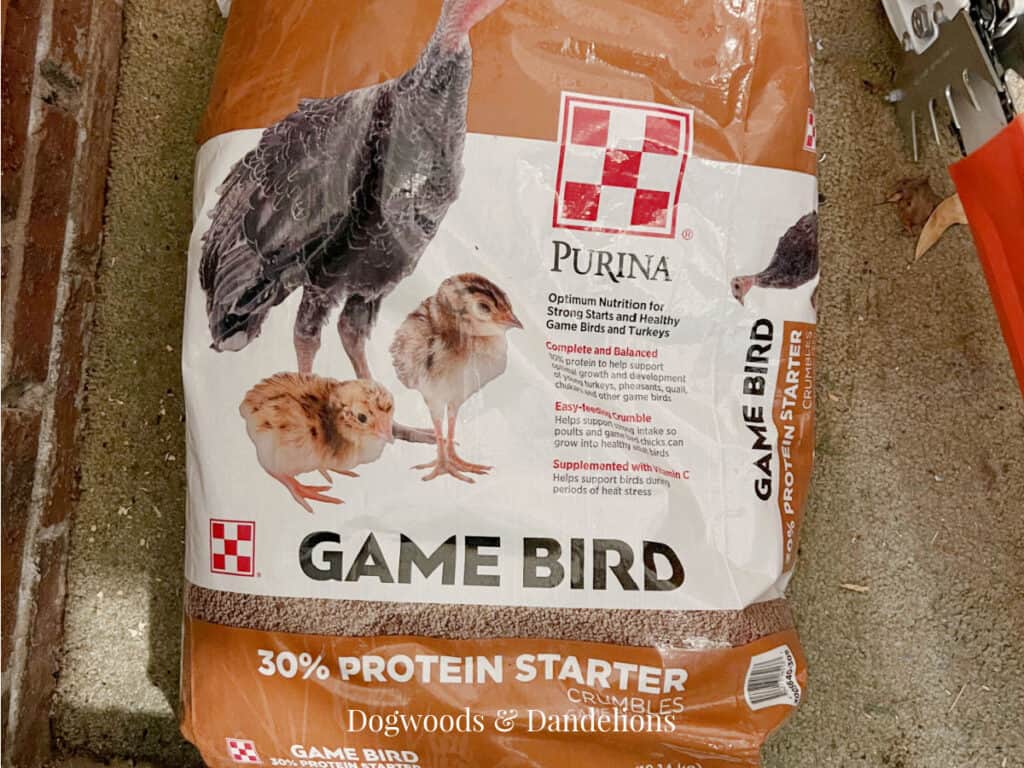
While most layer feed has 16% protein, you can find feed with 18 to 20 percent protein or some as high as 40% protein. The important thing to remember is to only give your flock the higher protein feed for a month or two while they are molting. Too much protein can harm your chickens in the long run.
If you don’t want to change their feed, you can provide your flock with a high-protein treat. Toss them some mealworms or sunflower seeds or even a few meat scraps from your table. These snacks will provide your flock with extra vitamins and minerals to help with feather regrowth.
Managing Your Flock During Molting
Watch your flock closely during the molting season. If some of your birds lose feathers quickly, they may have bald patches on their backs or necks. If this happens, watch them closely.
Other flockmates may start pecking them which can lead to bleeding. Unfortunately, chickens can be mean and occasionally, you may even have to remove a hen that is molting fast and getting picked on.
But try to minimize handling your flock as much as possible when your chickens are losing feathers. The pin feathers are filled with blood and can be painful.
Recognizing Other Causes of Feather Loss
While molting is a normal reason for a chicken to lose feathers, there are other reasons your backyard flock may be experiencing feather loss.
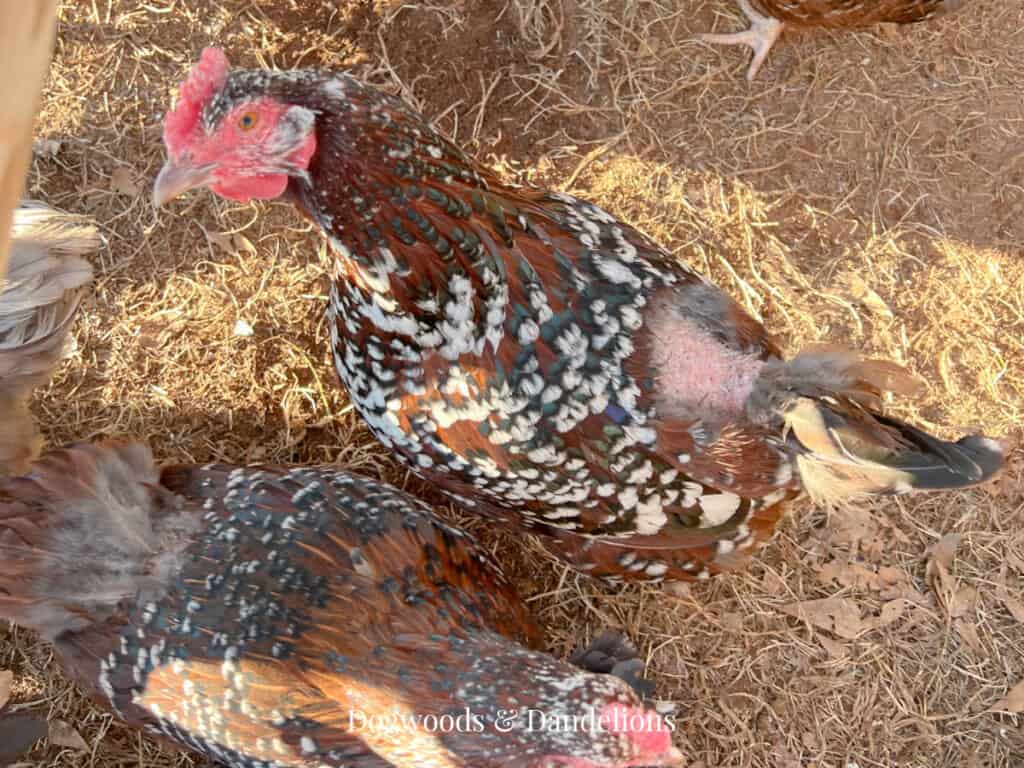
Pecking
One common issue is the pecking order. Chickens establish hierarchies, (The pecking order is real y’all!) and sometimes, birds may peck at each other’s feathers, causing bald spots.
Feather picking often results from stress or overcrowding, so giving your flock plenty of space can alleviate this problem. Certain flock members, like a bully chicken or a dominant hen, may be the culprits behind aggressive pecking.
Observing your chickens’ interactions can help you pinpoint any social issues that need addressing. If you find you have an aggressive hen, this post can help you reform the bully chicken.
Parasites
External parasites, such as mites and lice, account for many cases of feather loss. These tiny pests thrive in warm environments and can cause your chickens to lose feathers, especially around the vent area.
Keep an eye out for these parasites so you can quickly eliminate them if a problem arises. Using diatomaceous earth can be an effective preventative measure.
Providing your flock with a dust bathing area can also help to prevent these critters from harming your flock. Regular checks and treatments are key to keeping these pesky invaders at bay.
Illness
Health issues might also be the cause of feather loss. Conditions like vent gleet, fungal infections, and a diet deficient in protein can lead to missing feathers.
Your chickens need enough protein to maintain their feathers, so ensure your chicken feed has an appropriate ratio of this nutrient. (At least 16%.) Watch out for protein deficiency, particularly if your hens are free range and might not always get what they need from foraging alone.
A Broody Hen
A hen that wants to hatch some chicks will oftentimes pull out feathers so that her babies will be able to get warm against her skin.
And after she hatches and raises her brood, she will usually go through another molt as her hormones and eating habits return to normal.
An Aggressive Rooster
An aggressive rooster can also cause a hen to lose feathers at any time of the year. Especially if the rooster has a favorite hen he may mate her often.

This can lead to feather loss and even bleeding along her back. You can purchase chicken saddles to help her and allow her feathers to regrow. However, as soon as you remove the saddle, the rooster is likely to pull them out again.
Environmental Factors & Stress
Lastly, environmental factors like excessive heat or cold temperatures can cause chickens to lose feathers.
And other things that can cause stress to your flock can also cause feather loss. Predators roaming about can aggravate your flock and cause them stress. Adding new flock members can also add some anxiety to your flock as they determine a new pecking order.
Conducting regular checks for any sign of feather loss will help you spot these issues quickly and provide preventative measures to keep your hens healthy.
When to Seek Help for Feather Loss
While feather loss in your flock is normal, it can be cause for concern. But if it isn’t from their yearly mot, you may need to play detective.
Start with a close inspection of the chicken. Look for anything out of the ordinary – parasites, skin irritation, or worse.
Pay particular attention to the vent area, the preen gland, and any place where feathers seem sparse. Are there signs of pecking, redness, or skin abrasions?
A bit of pecking is normal, but if you spot open wounds or relentless picking, this could signal a behavioral problem in the flock or an external health issue demanding immediate attention.
Related Posts:
- Should You Feed Your Chickens Table Scraps?
- Why Have My Chickens Stopped Laying Eggs?
- How to Stop Your Chickens From Eating Their Eggs

Meet Julie
I’m a farm girl born and bred in North Carolina. I’ve been growing a vegetable garden for over 20 years (and helping my Mom grow hers even longer). I’ve been raising chickens in my bathtub and backyard for 12+ years. I believe that homegrown food can be made simple. Let’s get started.
